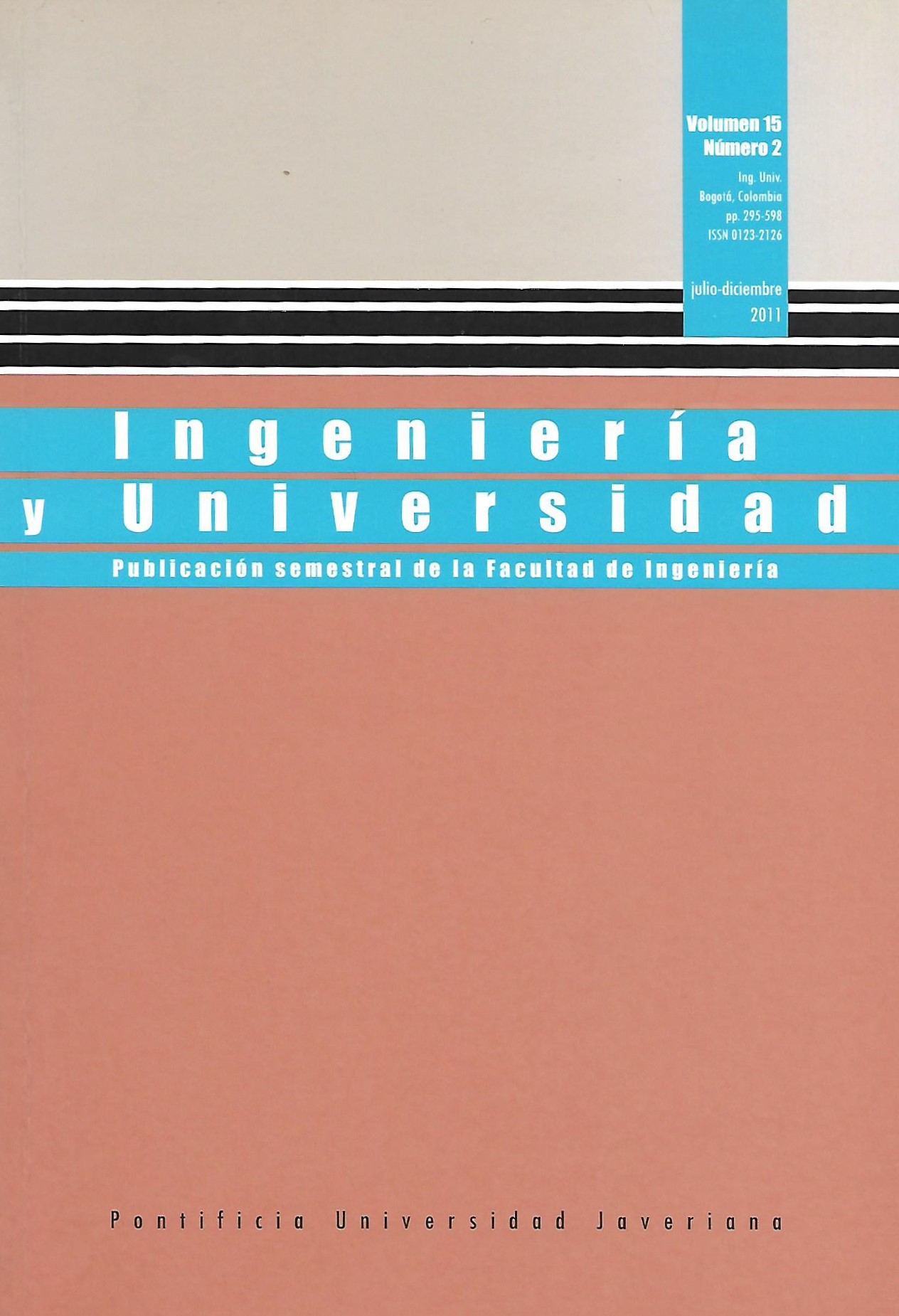Abstract
This article shows the effect of three different biodiesel blended with diesel on the operation of an electric power plant by simulating power consumption in a small house. Three different loads were tested in the plant in order to evaluate specific fuel consumption (SFC), and gaseous emissions (CO, CO2, O2 and others gases). It used castor oil biodiesel (CO), as well as frying oil (UFO) and palm oil (P), mixed up with diesel in a ratio of 1:4 (B20), in binary and tertiary blends of biodiesel. It was found that the SFC of the motor is directly proportional to the load it receives, while the internal combustion engine is independent from the load imposed on the power plant. Nevertheless, it depends on the kind of fuel used. The mix of fuels that was able to minimize the SFC and the gaseous mixture was D80/P10/UFO10.
ALCÁNTARA, R.; AMORES, J.; CANOIRA, L.; HIDALGO, E.; FRANCO, M. J. y NAVARRO, A. Catalytic production of biodiesel from soybean oil, used frying oil and tallow. Biomass & Bioenergy. 2000, num. 18, pp. 515-527.
BARBOSA, R. L.; MOREIRA, D. S. y FABIO, S. N. Desepenho comparativo de um motor de ciclo diesel utilizando diesel e misturas de biodiesel. Ciência e Agrotecnologia. 2008, núm. 32, pp. 1588-1593.
CANAKCI, M.; OZSEZEN, A. N.; ARCAKLIOGLU, E. y ERDIL, A. Prediction of performance and exhaust emissions of a diesel engine fueled with biodiesel produced from waste frying palm oil. Expert systems with Applications. 2009, num. 36, pp. 9268-9280.
CONCEICÃO, M. M.; CANDEIAB, L. A.; SILVA F. C.; BEZERRAB, A. F.; FERNANDEZ, V. J. y SOUZA, A. G. Thermoanalytical characterization of castor oil biodiesel. Renewable and Sustainable Energy Reviews. 2007, núm. 11, pp. 964-975.
DOOLITTE, J. S. El laboratorio del ingeniero mecánico. Buenos Aires: Hispanoamérica, 1962.
HERRERO, R. y MAIZA, I. Influencia de los biocombustibles sobre los materiales plásticos empleados en automoción. Navarra: Centro Multidisciplinar de Innovación y Tecnología de Navarra (CEMITEC), 2008.
HUERTAS, J. I. Curso de capacitación en combustión, laboratorio no. 8 medición de gases con Orsat. Toluca: Centro de Investigación en Ingeniería Automotriz (CIMA)-Instituto Tecnológico de Estudios Superiores de Monterrey, 2008.
ISSARIYAKUL, T.; KULKARNI, M. G.; MEHER, L. C.; DALAI, A. K. y BAKHSHI, N. N. Biodiesel production from mixtures of canola oil and used cooking oil. Chemical Engineering Journal. 2008, vol. 140, pp. 77-85.
JOURNEY FOREVER. El biodiesel y tu vehículo [document en línea]. <http://www.journeytoforever.org> [Consulta: 03-11-2009].
LIN, C. Y.; LIN, H. A. y HUNG, L. B. Fuel structure and properties of biodiesel produced by the per oxidation process. Fuel. 2006, núm. 85, pp. 1742-1749.
MA, F. y HANNA, M. A. Biodiesel production: a review. Bioresource Technology. 1999, núm. 70, pp. 1-15.
MEHER, L.; VIDYA, S. y NAIK, S. Technical aspects of biodiesel production by transesterification–a review. Renewable & Sustainable Energy Reviews. 2006, núm. 10, pp. 248-268.
MILIARIUM. Generalidades del biodiesel [documento en línea]. <http://www.miliarium.com/ Monografías/> [Consulta: 27-10-2009].
PLENTZ, S. M.; MENEGHETTI, M. R.; SERRA, T. M.; BARBOSA, D. C.; WOLF, C. R. Biodiesel production from vegetable oil mixtures. Cottonseed, soybean, and castor oils. Energy & Fuels. 2007, núm. 21, pp. 3746-3747.
SARIN, R.; SHARMA, M. y SINHARAY, M. Jatropha-palm biodiesel blends. An optimum mix for Asia. Fuel. 2006, núm. 86, pp. 1365-1371.
VICENTE, G.; MARTÍNEZ, M. y ARACIL, J. A comparative study of vegetable oils for biodiesel production in Spain. Energy & Fuels. 2006, núm. 20, pp. 394-398.
ZHANG, Y.; DUBÉ, M.; MCCLEAN, D. y KATES M. Biodiesel production from waste cooking oil: 1. Process design and technological assessment. Bioresource Technology. 2003, núm. 89, pp. 1-16.
This journal is registered under a Creative Commons Attribution 4.0 International Public License. Thus, this work may be reproduced, distributed, and publicly shared in digital format, as long as the names of the authors and Pontificia Universidad Javeriana are acknowledged. Others are allowed to quote, adapt, transform, auto-archive, republish, and create based on this material, for any purpose (even commercial ones), provided the authorship is duly acknowledged, a link to the original work is provided, and it is specified if changes have been made. Pontificia Universidad Javeriana does not hold the rights of published works and the authors are solely responsible for the contents of their works; they keep the moral, intellectual, privacy, and publicity rights.
Approving the intervention of the work (review, copy-editing, translation, layout) and the following outreach, are granted through an use license and not through an assignment of rights. This means the journal and Pontificia Universidad Javeriana cannot be held responsible for any ethical malpractice by the authors. As a consequence of the protection granted by the use license, the journal is not required to publish recantations or modify information already published, unless the errata stems from the editorial management process. Publishing contents in this journal does not generate royalties for contributors.


